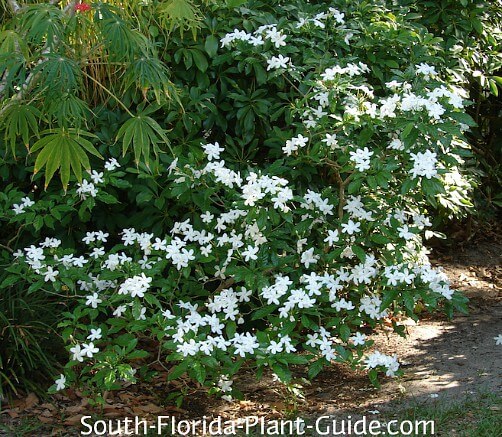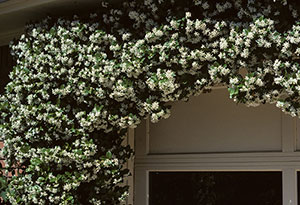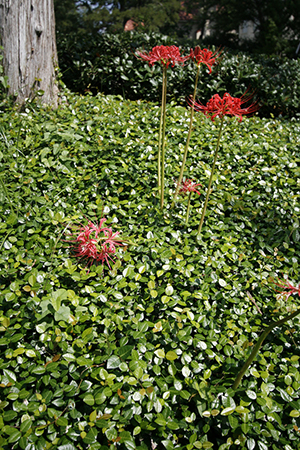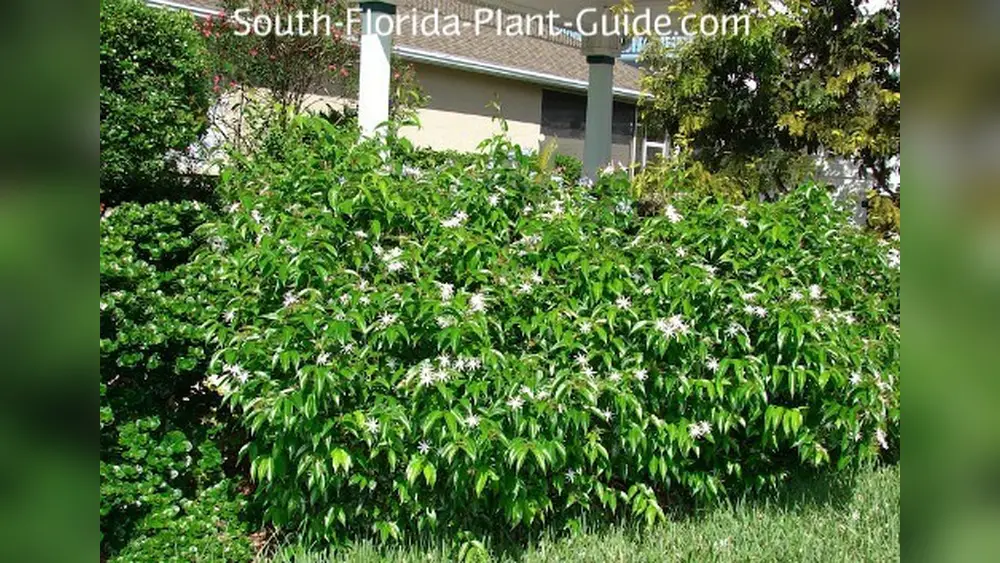If you’re looking to add a touch of beauty and fragrance to your Florida garden, choosing the best jasmine plant is key. But with so many varieties out there, how do you know which one will thrive in Florida’s unique climate?
You want a jasmine that not only looks stunning but also handles the heat, humidity, and occasional drought without fuss. You’ll discover the top jasmine plants perfectly suited for Florida’s environment. Whether you crave the sweetest scent or a hardy, evergreen vine, we’ll help you pick the jasmine that will make your outdoor space bloom with charm all year round.
Keep reading to find the perfect jasmine for your Florida garden and transform your space into a fragrant paradise.
Top Jasmine Varieties For Florida
Jasmine plants thrive in Florida’s warm climate and sandy soil. Choosing the right variety ensures healthy growth and fragrant blooms. These jasmine types suit Florida gardens well. Each offers unique features and care needs. Explore the best jasmine varieties for your landscape.
Asiatic Jasmine
Asiatic Jasmine is a popular groundcover in Florida. It grows low and spreads quickly. This variety handles heat and drought well. Its dark green leaves add color all year. Asiatic Jasmine produces small, white flowers in spring. It needs little maintenance and resists pests.
Arabian Jasmine
Arabian Jasmine is famous for its strong, sweet scent. It grows as a vine or shrub. This jasmine blooms mostly in warm months. Its white flowers attract pollinators like bees and butterflies. Arabian Jasmine prefers full sun to partial shade. It requires regular watering for best growth.
Common Jasmine
Common Jasmine is easy to grow and care for. It has bright green leaves and star-shaped flowers. This variety blooms from spring to fall. It can climb fences or grow as a bush. Common Jasmine adapts well to Florida’s humidity. It needs moderate sunlight and well-drained soil.
Spanish Jasmine
Spanish Jasmine is a hardy plant with fragrant white blooms. It climbs or trails on supports. This jasmine blooms in summer and fall. It thrives in full sun and tolerates some shade. Spanish Jasmine attracts hummingbirds and butterflies. It needs occasional watering and pruning.
Climate And Soil Needs
Understanding the climate and soil needs is crucial for growing the best jasmine plant in Florida. Jasmine plants thrive in warm climates with well-drained soil. Florida’s unique environment offers many advantages but also some challenges for jasmine growth. Knowing these details helps gardeners choose the right jasmine variety and care for it properly.
Florida’s Growing Conditions
Florida has a warm, humid climate perfect for many jasmine types. Winters are mild, and summers are hot and wet. These conditions support jasmine growth year-round. However, hurricanes and heavy rains can affect delicate plants. Coastal areas may have salty air, which some jasmines tolerate better than others.
Soil Preparation Tips
Jasmines prefer well-drained soil rich in organic matter. Sandy soils common in Florida need extra compost to hold moisture. Test the soil pH; jasmines grow best in slightly acidic to neutral soil (pH 6.0 to 7.0). Remove weeds and loosen the soil before planting. Good soil preparation helps jasmine roots grow strong and healthy.
Sunlight And Water Requirements
Jasmine plants need full sun to partial shade to bloom well. At least 4 to 6 hours of sunlight daily is ideal. Morning sun with afternoon shade protects from intense heat. Water jasmines regularly but avoid waterlogging. Deep watering once or twice a week is better than frequent shallow watering. Proper sunlight and watering keep jasmine vibrant and fragrant.
Planting And Care Tips
Growing jasmine in Florida requires special care to thrive in the warm climate. Proper planting and regular maintenance keep your jasmine healthy and blooming. Follow these tips to ensure your jasmine plant flourishes in Florida’s environment.
Choosing The Right Location
Select a spot with full sun to partial shade. Jasmine needs at least 4 hours of sunlight daily. Avoid areas with strong afternoon sun to prevent leaf burn. Ensure good air circulation to reduce disease risk. The soil should be well-drained and fertile for best results.
Planting Techniques
Dig a hole twice the size of the root ball. Gently loosen roots before planting to encourage growth. Place the plant in the hole, keeping the top of the root ball level with the soil surface. Fill the hole with soil and press firmly. Water well immediately after planting to settle the soil.
Watering And Fertilizing
Water jasmine deeply once or twice a week during dry spells. Avoid waterlogging to prevent root rot. Use mulch to keep soil moist and cool. Fertilize with a balanced, slow-release fertilizer every 6 to 8 weeks during growing season. Stop fertilizing in late fall to prepare for dormancy.
Pruning For Vibrancy
Prune jasmine after flowering to shape the plant and promote new growth. Remove dead or weak stems to improve air flow. Cut back long vines to encourage bushier growth. Regular pruning enhances flower production and keeps the plant neat.

Credit: www.south-florida-plant-guide.com
Fragrance And Aesthetic Appeal
Jasmine plants bring a unique blend of fragrance and beauty to Florida gardens. Their sweet scent fills the air, making outdoor spaces more inviting. The visual charm of jasmine flowers adds elegance and softness to any landscape. Choosing the right jasmine enhances both smell and look, creating a peaceful garden retreat.
Strongest Scented Jasmine Types
Some jasmine varieties are famous for their intense fragrance. Arabian jasmine (Jasminum sambac) offers a strong, sweet scent that lingers in warm Florida evenings. Star jasmine (Trachelospermum jasminoides) produces a fresh, light aroma that spreads quickly. Confederate jasmine also has a rich fragrance, making it popular in southern gardens. These types bring powerful scents that attract bees and butterflies.
Flower Colors And Blooming Seasons
Jasmine flowers come mostly in white and yellow shades. Arabian jasmine blooms year-round in warm climates, providing constant beauty. Yellow jasmine shines in spring and summer, adding bright color. Star jasmine flowers in late spring, offering fresh blooms for several months. Understanding bloom times helps plan a garden with continuous floral display.
Using Jasmine To Enhance Garden Spaces
Jasmine vines climb trellises or fences, creating natural screens with lovely flowers. Groundcover jasmine fills empty garden spots with lush greenery and small blossoms. Container planting suits patios and balconies, spreading fragrance close to living areas. Combining jasmine with other plants adds texture and layers to your garden’s design. Its scent and look improve any outdoor area beautifully.
Common Issues And Solutions
Growing jasmine in Florida offers beauty and fragrance, but some challenges arise. Common issues affect the health and growth of jasmine plants. Understanding these problems helps keep your jasmine thriving. Here are common problems and their practical solutions.
Pests And Diseases
Florida’s warm climate attracts pests like aphids and whiteflies. These insects suck sap and weaken the plant. Use insecticidal soap or neem oil to control pests safely. Fungal diseases like powdery mildew can also appear. Ensure good air circulation and avoid overhead watering. Remove infected leaves promptly to stop spread.
Dealing With Florida Weather Challenges
Florida’s heat and humidity can stress jasmine plants. Too much sun causes leaf burn. Plant jasmine in a spot with morning sun and afternoon shade. Heavy rains may cause root rot. Improve soil drainage by adding organic matter. During dry spells, water jasmine deeply but less often to encourage strong roots.
Preventive Care Practices
Healthy jasmine starts with good care. Use well-draining soil and mulch to retain moisture. Fertilize jasmine lightly during growing season with balanced fertilizer. Prune regularly to remove dead or crowded branches. Inspect plants weekly to catch problems early. Prevention saves time and keeps jasmine vibrant year-round.

Credit: gardeningsolutions.ifas.ufl.edu
Where To Buy Jasmine Plants In Florida
Finding the best jasmine plants in Florida starts with knowing where to buy them. Several options offer a wide variety of jasmine types suitable for Florida’s climate. Choosing the right place ensures healthy plants that thrive in your garden.
Local Nurseries And Garden Centers
Local nurseries are excellent places to find jasmine plants. They often carry varieties suited for Florida’s weather. Staff can offer advice on planting and care. Visiting these centers lets you inspect plants before buying. Many nurseries stock popular types like Star Jasmine and Arabian Jasmine.
Online Plant Retailers
Online stores provide a large selection of jasmine plants. They offer convenience and home delivery. Many specialize in Florida-friendly plants. Look for retailers with good reviews and clear plant descriptions. Some even offer guarantees for plant health upon arrival.
Choosing Healthy Jasmine Plants
Pick plants with vibrant green leaves and no spots. Avoid those with wilting or yellowing foliage. Check stems for firmness and no signs of damage. Healthy roots should be white and moist, not dry or black. A strong plant grows well and resists pests better.

Credit: gardeningsolutions.ifas.ufl.edu
Frequently Asked Questions
Which Jasmine Grows Best In Florida?
Asiatic Jasmine grows best in Florida. It is evergreen, drought-tolerant, and thrives in Florida’s climate, making it ideal for landscapes.
What Is The Strongest Smelling Jasmine Plant?
The strongest smelling jasmine plants are Common Jasmine (Jasminum officinale), Arabian Jasmine (Jasminum sambac), and Spanish Jasmine (Jasminum grandiflorum). Common Jasmine offers an intense, sweet, musky scent. Arabian Jasmine emits a sweet, fruity aroma, while Spanish Jasmine produces a rich, sweet fragrance.
When To Plant Jasmine In Florida?
Plant jasmine in Florida during early spring, after the last frost, for best growth and blooming.
What’s The Difference Between Confederate Jasmine And Star Jasmine?
Confederate jasmine (Trachelospermum jasminoides) is a woody vine with star-shaped white flowers. Star jasmine is another name for it. They are the same plant, known for fragrant blooms and evergreen leaves. The terms are interchangeable in gardening and landscaping contexts.
Conclusion
Choosing the best jasmine plant for Florida enhances your garden’s beauty. Asiatic jasmine thrives well in Florida’s warm climate. It stays green year-round and requires little water. Star jasmine adds lovely fragrance and delicate white flowers. Both types attract pollinators and add natural charm.
Planting jasmine creates a peaceful, inviting outdoor space. Enjoy easy care and vibrant blooms all year. Your garden will benefit from these hardy, fragrant plants. Start growing jasmine today for a bright, fresh garden.

